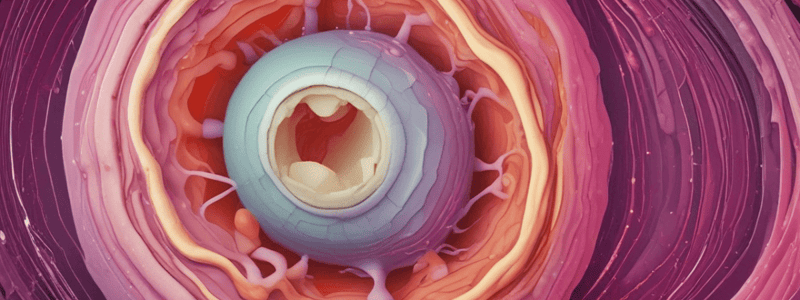Podcast
Questions and Answers
What is the significance of the 2.5 cm cutoff point for fine needle aspiration (FNA) in mildly suspicious TR3 lesions?
What is the significance of the 2.5 cm cutoff point for fine needle aspiration (FNA) in mildly suspicious TR3 lesions?
- It confirms the need for surgical intervention.
- It is irrelevant in diagnosing thyroid conditions.
- It indicates a high likelihood of thyroid carcinomas.
- It signifies the presence of benign nodules. (correct)
Why is the 2.5 cm cutoff point specifically used in mildly suspicious TR3 lesions for FNA?
Why is the 2.5 cm cutoff point specifically used in mildly suspicious TR3 lesions for FNA?
- To identify when thyroid carcinomas show decreased survival rates. (correct)
- To determine if immediate chemotherapy is required.
- To differentiate between different types of benign thyroid nodules.
- To predict the exact type of thyroid carcinoma present.
What do studies reveal about the relationship between thyroid carcinomas and their size in relation to the 2.5 cm cutoff point?
What do studies reveal about the relationship between thyroid carcinomas and their size in relation to the 2.5 cm cutoff point?
- Thyroid carcinomas become undetectable once they exceed 2.5 cm.
- Thyroid carcinomas have increased survival below 2.5 cm.
- Thyroid carcinomas are always benign if smaller than 2.5 cm.
- Thyroid carcinomas show no impact on survival until reaching 2.5 cm. (correct)
How does the 2.5 cm cutoff point help in managing mildly suspicious TR3 lesions with FNA?
How does the 2.5 cm cutoff point help in managing mildly suspicious TR3 lesions with FNA?
Based on the information provided, what can be inferred about the behavior of thyroid carcinomas below 2.5 cm as per FNA results?
Based on the information provided, what can be inferred about the behavior of thyroid carcinomas below 2.5 cm as per FNA results?




